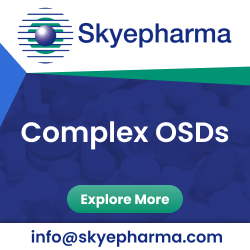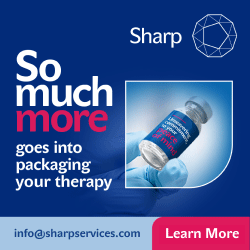Overview of taste masking excipients & technologies for solid & liquid oral pharmaceuticals offered by leading contract manufacturers (CDMOs, CMOs).
Q1. What is taste masking and why is it important for oral pharmaceuticals?
Taste masking techniques are applied to mask or overcome the bitter or unpleasant taste of pharmaceutically active substances in order to achieve patient acceptability and compliance.
Unless the active ingredient is tasteless or does not have any unpleasant taste, taste-masking plays a key role in the success of final oral pharmaceuticals, for both solid dosage forms and liquid dosage forms.
Taste masking is defined as a perceived reduction of an undesirable taste that would otherwise exist in oral pharmaceuticals. The efficiency of taste-masking is often a key determinant for the success of specialized finished dosage forms like orally disintegrating tablets (ODTs) and films, and chewable tablets.
Taste is a crucial factor that gives oral dosage forms a unique identity. Therefore, oral administration of bitter drugs with an unacceptable degree of palatability is a key issue for health care providers, especially in the case of pediatric patients.
Taste masked oral formulation drug development is carried out for pediatric and geriatric dosage forms, for elderly and pediatric patients who have trouble swallowing tablets, capsules & other finished dosage forms.
As noted above, taste masking strategies can be applied to both solid and liquid oral dosage forms, however, taste masking excipients may vary depending on the physical state of the oral pharmaceuticals (whether it is a solid dosage form or liquid dosage form).
Several approaches like adding flavors and sweeteners, use of lipoproteins for inhibiting bitterness, numbing of taste buds, coating of drug with inert agents, microencapsulation, multiple emulsion, viscosity modifiers, vesicles and liposomes, prodrug formation, salt formation, formation of inclusion and molecular complexes, solid dispersion system and application of ion exchange resins have been tried by formulators to mask the unpleasant taste of the bitter drugs.
Ultimately, these drug taste masking strategies increase the desirability of drug products and make oral pharmaceuticals more suitable for administration. Drug taste-masking techniques for solid oral dosage forms (orally disintegrating tablets from ODT technology, effervescent tablets) and oral liquid dosage forms (suspensions) further impart the following primary benefits, among others, to patients:
1. Taste-masking strategies increase patient compliance by making the taste of medications suitable for consumption.
2. Taste-masking may improve the stability of some drugs.
3. Taste masking techniques may improve the efficacy & bioavailability of certain oral solid dosage forms and liquid dosage forms.
4. Taste-masking technologies improve the organoleptic (related to sensory organs) properties of a drug product.
Q2. What are the different pharmaceutical taste masking technologies?
Taste masking is achieved with the help of pharmaceutical taste-masking technologies. Some taste-masking technologies widely used by leading CMOs and CDMOs are explored below:
1. Taste masking by adding flavors, sweeteners, amino acids, & other excipients
It’s the most common method of taste masking and involves adding a combination of taste masking excipients such as sweeteners (sucralose, aspartame) and flavors (peppermint, citrus) to facilitate the taste masking of bitter drugs.
2. Polymer coating technologies
The simplest taste masking technique is direct polymer coating of drug particles, with a composition that is insoluble in the mouth, to minimize interaction between the drug and one's taste buds.
Hydrophobic or hydrophilic polymers, lipids, and sweeteners can be used as coating agents, alone or in combination to produce single or multi-layer coats.
Fluid bed coating technologies are increasingly being adopted by pharmaceutical taste masking CMOs and contract development and manufacturing organizations (CDMO) offering polymer coating services.
3. Microencapsulation taste masking technology
In pharmaceutical drug development, the method of coating pharmaceutically active substances (APIs), either solid or liquid droplets, with a polymeric material is called microencapsulation.
There are various types of nutraceutical coating agents such as beeswax, carnauba wax acrylics, ethylcellulose, gelatin, hydroxyethyl cellulose, povidone, and shellac, which may be used. Microcaps are used in conjunction with compressed orally disintegrating tablets (ODT) to successfully implement encapsulation.
4. Melt granulation taste masking technologies
Melt granulation involves granulating a drug (API) and then coating the drug-loaded granules with a taste-masking polymer. Melt granulation is a process by which pharmaceutical powders are efficiently agglomerated by the use of a binder, which can be a molten liquid or a solid that melts during the process.
Granulation decreases the surface area of a drug by increasing its particle size and thus minimizing the amount of taste-masking polymer required. Granulation-coat approach is preferred over layer-coat for high doses as the granulation process can afford high drug loading.
5. Inclusion complexation taste masking technique
In the case of complexation, the goal is to preferentially bind the drug to a substrate that effectively reduces the concentration of free drug in the environment, preferably below the taste-detectable limit. Cyclodextrins have been extensively used for taste-masking bitter drugs by forming inclusion complexes with drug molecules.
Q3. What are the challenges involved in pharmaceutical taste masking?
Designing medicinal formulations to enable oral administration to specialized populations, especially elderly and pediatric patients, requires innovative approaches to enhance the swallowability and palatability of the medications. Taste masking is therefore crucial for the development of solid and liquid oral dosage forms.
Pharmaceutical taste masking CMOs and CDMOs specialized in taste masking strategies may face several challenges when taste-masking a drug. However, new pharmaceutical taste-masking technologies for bitter drugs and food supplements are being developed to overcome the challenges currently associated with taste-masking. Furthermore, advances in existing taste-masking technologies have also helped in tackling the challenges associated with taste masking.
Some of the challenges involved in pharmaceutical taste masking include:
- Achieving taste masking without compromising the safety and efficacy of solid and liquid oral dosage forms.
- Ensuring that the taste-masking coatings and encapsulations dissolve quickly and don't retard drug release when the oral dosage form (e.g. tablets, capsules, sustained release formulations) passes into the gastrointestinal tract.
- Coatings, including polymer coatings, must provide sufficient barrier properties to mask taste when the dosage form (e.g. tablet, capsule, sustained release formulation) is in the oral cavity and yet dissolve quickly enough to not retard drug release when the drug particles pass into the GI tract.
- The absence of a robust measurement system to provide quantitative data on the intensity and duration of aversive taste attributes makes optimization of pharmaceutical taste-masking technologies difficult.
- Finding a balance between dissolution & taste-masking.
- Regulatory challenges.
- Selecting excipients as some of them can impart highly undesirable tastes, malodors and cause trigeminal irritations.
- Understanding variations in the palettes of different age groups and designing formulations suited to their specific tastes.
- Formulating taste masked pharmaceutically active substances & excipients into finished dosage forms with acceptable organoleptic properties suitable for oral administration.
- Evaluating the success or efficiency of the taste-masking technology.
Q4. What is the criteria for selecting a taste masking technique?
Appropriate taste-masking techniques, for the taste masking of bitter drugs, are selected in regard to the basic considerations listed below among various others.
1. The bitterness extent of active pharmaceutical ingredients (APIs)
The bitterness of an active pharmaceutical ingredient (API) influences the selection of a taste-masking technology. For example, an extremely bitter drug that cannot be taste masked with sweetening or taste masking excipients, uses intermediary pharmaceutical taste masking technologies like polymer coating and matrix entrapment to achieve the desired level of taste masking.
2. Desired dosage strength
The dosage strength of a drug may dictate whether a particular formulation strategy would be suitable to achieve taste masking. For example, for low dose drugs such as pediatric and geriatric dosage forms, taste masking may be achieved by using flavoring agents. However, for high dose drugs, coatings are preferred to achieve taste masking along with sweeteners.
3. Drug particulate - Shapes & Sizes
Particle characteristics of the drug can affect the taste masking process efficiency. Core materials with irregular shapes and small particle size lead to poor taste masking and varied dissolution of coated particles.
Quantifying the size and shape values of the formulation prior to applying multilayer taste masking coatings can help ensure proper formulation for achieving a taste masked particle with the highest possible drug content.
4. Physicochemical properties: (eg. Solubility, Ionic Nature)
Physicochemical properties of a drug play an important role in the selection of a taste masking technology. For example, in poorly soluble dosage forms, lipid polymer coatings are enough to achieve taste masking, whereas for soluble dosage forms more technologies and coating with polymeric binders are required for the taste masking of bitter drugs.
Ionic characteristics of drugs govern the selection of ion exchange resin polymers and the suitability of the drug candidate for this technology. For example, anionic polymers are good candidates for cationic drugs and cationic polymers are the choice of excipients for anionic drugs.
5. Desired drug release profile
Taste masking techniques aim to prevent drug release in saliva and at the same time to obtain the desired release profile in the gastrointestinal tract. Coatings may be used to achieve taste masking with desired release profiles; controlled release, delayed release, immediate or fast release, modified release, targeted release (enteric), sustained release formulations, etc.
6. Required dosage Form
Required dosage forms may govern the selection of taste-masking techniques for pediatric and geriatric dosage forms. For example, in large dose drugs chewable tablets and orodispersible tablets (made using freeze drying technology) are preferred for ease of administration.
Taste masking technologies such as the use of sweeteners, particulate coating, microencapsulation and granulation can be employed for chewable tablets and orodispersible tablets (ODTs), supported with technologies such as viscosity enhancers and pH modifiers to achieve taste masking in liquid dosage forms.
In summary, a variety of pharmaceutical taste-masking technologies are available and used in the pharmaceutical industry today, with new platforms being researched and developed constantly. The type of technology used depends largely on the physical and chemical properties of the drug substance and the desired finished dosage form.
Q5. Which are the different pharmaceutical companies offering taste masking technologies?
There are various pharmaceutical manufacturers, CDMOs and CMOs that offer taste masking technologies and taste masking methods for masking the unpleasant and bitter taste of drugs.
Some leading CDMOs and CMOs offering taste masking solutions (taste masking approaches for unpleasant taste drugs) include:
Adare Pharmaceuticals - Microcaps® taste masking and controlled release technology
Using proprietary technologies, including taste masking technology, orally disintegrating tablets (ODTs) technology or ODT technology (e.g. freeze drying), customized drug release technology, and bioavailability enhancement, Adare has demonstrated the unique ability to transform drug formulations and create novel Rx and over-the-counter (OTC) products through taste masking and controlled release technologies.
Microcaps® Taste Masking Technology achieves uniform & efficient coating of drug particles by a combination of coacervation (phase separation) & spray coating to build polymeric membranes of varying porosity & thickness.
Athena Drug Delivery Solutions Pvt Ltd - Encapsulation taste masking technology
Athena is a leader in developing oral dispersible products such as orodispersible tablets (ODTs), based on its platform technologies such as freeze drying and it also offers taste masking solutions for masking the bitter or pungent tastes of drugs using encapsulation technology.
Coating Place Inc. - Taste masking methods
Coating Place focuses on two processes which include Wurster coating and the creation of an ion exchange resin complex. Taste mask coatings typically use a common strategy involving the addition of a coating to the pharmaceutically active substance to delay release of the product until it has bypassed the mouth.
Coating Place offers taste masking solutions and has extensive experience in formulating and manufacturing taste masked products using Wurster fluid bed coating, ion exchange, and related taste masking methods and technologies.
All Suppliers
















 Athena Pharmaceutiques is a Partner of Choice for Drug Delivery & Life Cycle Management.
Athena Pharmaceutiques is a Partner of Choice for Drug Delivery & Life Cycle Management.




